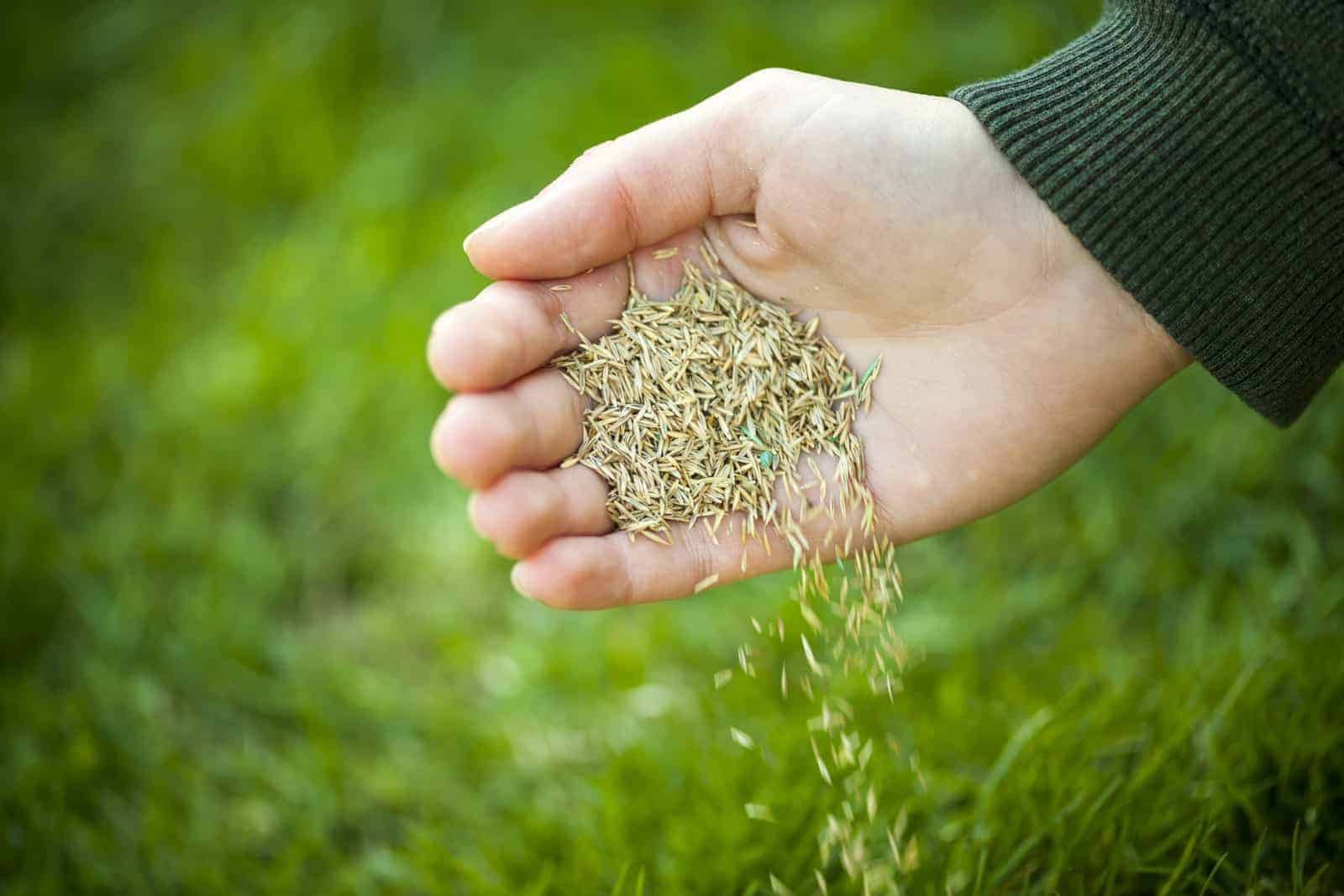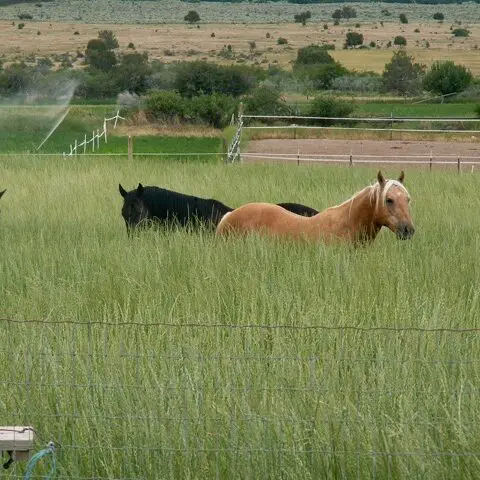Yes, you can seed a pasture with horses on it, but it requires careful planning and management. A pasture is a vital component of any horse farm or property, providing necessary grazing and exercise areas for horses.
However, overgrazing, weather conditions, and other factors may deplete the grass growth on a pasture. Therefore, it becomes necessary to seed the pasture with new grass seed to promote healthy growth and maintain a sufficient food source for the horses.
However, when seeding a pasture with horses on it, several precautions must be taken to ensure the success of the process and the safety of the horses. This article will discuss the considerations involved in seeding a pasture with horses on it and provide guidance on how to achieve the best results.
Benefits Of Seeding Pastures With Horses In Mind
Seeding pastures with horses in mind can offer a range of benefits that contribute to the overall well-being and sustainability of the grazing area. One significant advantage is the improved nutritional value it provides for the horses. The right mix of grasses and legumes can offer a diverse array of essential nutrients, ensuring that the horses’ dietary requirements are met.
In addition to enhanced nutritional value, seeding pastures can also lead to increased productivity and sustainability of the grazing area. By carefully selecting the appropriate grasses and legumes, the overall yield of the pasture can be improved, providing ample forage for the horses.
Furthermore, when pastures are seeded with horse-friendly grasses, it can help prevent the growth of unwanted weeds. This not only ensures a healthier environment for the horses but also reduces the need for herbicides and pesticides, contributing to the sustainability of the pasture.
Moreover, seeding pastures can also play a vital role in erosion control. The well-established root systems of the grasses and legumes help stabilize the soil, reducing the risk of erosion and improving the overall health of the pasture.
| Benefits of Seeding Pastures with Horses in Mind | |
|---|---|
| Improved nutritional value for grazing horses | The right mix of grasses and legumes provides essential nutrients for horses |
| Enhanced pasture productivity and sustainability | Seed selection can improve the overall yield of the pasture |
| Prevention of weed growth and erosion | Horse-friendly grasses help control weeds and stabilize soil |
Factors To Consider Before Seeding Pastures With Horses
Soil type and condition: Understanding the soil composition and its moisture retention capabilities is crucial before seeding pastures for horses. Different soil types require varying levels of preparation and management to ensure successful growth.
Appropriate horse breeds and their grazing habits: Consider the type of horse breeds that will be grazing on the pasture as different breeds have different grazing habits. Some horses prefer short grasses, while others prefer longer grasses. Matching the breed’s grazing behavior with the pasture’s vegetation is essential to ensure healthy and sustainable grazing.
Maintenance and management practices: Implementing regular pasture maintenance and management practices is important for healthy growth. This includes proper fertilization, controlling weeds, rotational grazing, and addressing any soil erosion issues. Regular monitoring of the pasture’s condition is also necessary.
Budget and resources: Evaluate the budget and resources available for the project. This includes the cost of purchasing quality seed, any necessary equipment, and hiring professional assistance if needed. It is important to allocate sufficient resources for successful pasture seeding.
Selecting The Right Grass And Seed Mix For Horse Pastures
When establishing a horse pasture, selecting the right grass and seed mix is crucial.
For horse pastures, it is important to consider the ideal grass species, taking into account various factors like climate and geographical location.
The choice of grass species may vary depending on the specific region or area.
Certain grass species are more suitable for hot climates, while others thrive in cooler regions.
It is essential to choose a grass species that can withstand typical weather conditions in your area.
Additionally, the seeding rates and planting techniques play a significant role in achieving success.
Proper seeding rates ensure adequate coverage, preventing bare spots in the pasture.
Following appropriate planting techniques helps in promoting healthy grass growth and establishment.
Therefore, meticulous consideration of grass species, climate, geographical location, seeding rates, and planting techniques is essential when seeding a pasture with horses on it.
Preparing The Pasture For Seeding
When preparing a pasture for seeding, it is essential to start with a soil test to determine its fertility level. This will help guide you in applying the right amount of fertilizer and other nutrients to promote optimal grass growth. Weed control is another crucial step to ensure that your newly seeded pasture won’t be overrun by unwanted plants. Depending on the severity of the weed problem, you may need to use herbicides or opt for manual removal techniques. Finally, proper seedbed preparation is vital for successful pasture establishment. This involves removing any debris, tilling the soil to create a loose and level surface, and ensuring good seed-to-soil contact.
Seeding Techniques For Horse Pastures
When establishing or rejuvenating a horse pasture, proper seeding techniques are essential for successful growth and maintenance. Three commonly used methods include broadcast seeding, drilling seeding, and over-seeding techniques.
Subheading: Broadcast Seeding
Broadcast seeding involves evenly spreading seeds over the pasture area using a broadcast spreader or hand casting. This technique is effective for large areas but may result in uneven seed distribution. However, it provides good coverage for establishing new pastures or restoring bare patches.
Subheading: Drilling Seeding
Drilling seeding is beneficial for both small and large pastures. It involves using a seed drill machine to place seeds at a proper depth and spacing. This technique ensures better seed-to-soil contact and increases the likelihood of successful germination. It is ideal for establishing new pastures or rejuvenating existing ones.
Subheading: Over-seeding Techniques
Over-seeding techniques involve spreading additional grass seed over an already established pasture. This method helps to fill in bare spots, improve forage quality, and enhance pasture density. Aerating the soil before over-seeding can help improve seed-to-soil contact and increase germination rates.
Essential Tips For Successful Pasture Seeding With Horses
Timing considerations: Seeding a pasture with horses requires careful planning and consideration. It is important to choose the right time of year to ensure successful establishment. Spring and fall are typically the best seasons for seeding, when soil temperatures are conducive to germination and growth. Avoid seeding during extreme weather conditions such as drought or heavy rainfall, as this can affect the success of the establishment process.
Proper irrigation and watering: Adequate irrigation and watering are essential for pasture seeding success. Ensure that the soil is properly prepared and moistened before seeding. After seeding, maintain a consistent watering schedule to keep the soil moist. Overwatering can lead to poor establishment, so it is important to strike a balance.
Monitoring and assessing pasture establishment: Regular monitoring and assessment are necessary to track the progress of pasture establishment. Keep an eye out for any signs of weed growth, pests, or disease, and take appropriate measures to control them. Assess the overall health and growth of the seeded pasture, and make any necessary adjustments to ensure optimal success.
Maintaining Seeded Pastures With Horses
If you have a pasture with horses and want to seed it, there are several important factors to consider. One of the key aspects in maintaining seeded pastures with horses is effective grazing management strategies. By implementing rotational grazing and utilizing temporary fencing, you can prevent overgrazing and give the newly seeded areas time to establish and grow. Regular mowing is also crucial as it helps to control weed growth and encourages the desired pasture plants to flourish. In addition to grazing management, proper fertilization and soil amendments play a vital role in the success of the seeded pasture. Conducting soil tests and applying the appropriate nutrients as recommended will promote healthy growth and ensure the longevity of your pasture. By following these practices, you can create a lush and productive pasture for your horses.

Credit: thehorse.com
Common Challenges And Solutions For Seeding Pastures With Horses
Can You Seed a Pasture With Horses on ItCommon Challenges and Solutions for Seeding Pastures with Horses
Horses can pose some challenges when it comes to seeding pastures. One particular issue is managing their hoof impact on newly seeded areas. The hooves of horses can cause damage to freshly planted grass, resulting in poor germination and growth. To address this, it’s important to prevent horses from walking on newly seeded areas. This can be achieved by installing temporary fencing or creating designated paths. Additionally, it’s essential to deal with excessive or insufficient grazing to ensure successful pasture establishment. Overgrazing can lead to bare patches and hinder seedlings’ growth, while undergrazing can result in weed encroachment. Implementing rotational grazing and properly monitoring the pasture can help strike a balance. Lastly, when it comes to weed infestations, targeted herbicide application and proper grazing management can be effective strategies.
Verifying Success: Signs Of A Healthy Seeded Pasture For Horses
Verifying success in seeding a pasture with horses involves looking for signs of a healthy environment. One important factor is having thick and uniform grass coverage throughout the pasture. This ensures that the horses have enough grazing material and helps prevent soil erosion. Additionally, the presence of desirable grass species is crucial. These species provide the necessary nutrients for the horses and help maintain the overall health of the pasture. Proper soil health indicators also play a significant role. This includes checking for well-drained soil, adequate organic matter content, and an optimal pH level. It is essential to regularly monitor these indicators to ensure the continued health and vitality of the seeded pasture for horses.
Frequently Asked Questions On Can You Seed A Pasture With Horses On It
Can You Seed A Pasture With Horses On It?
Yes, you can seed a pasture with horses on it, but it requires proper planning and management. To ensure the best results, consider rotating the horses to a different pasture during seeding, and implement seed protection measures like temporary fencing.
It’s also important to choose horse-friendly seed varieties and provide proper nutrition and care during the seeding process.
Conclusion
It is indeed possible to seed a pasture with horses on it. By implementing proper pasture management techniques, such as rotational grazing and rest periods, you can create an optimal environment for both your horses and the growth of new grass.
Careful consideration of soil conditions, weather patterns, and the types of grasses to introduce will greatly contribute to the success of the seeding process. With the right approach, you can transform your pasture into a lush and nutritious grazing area for your horses.

